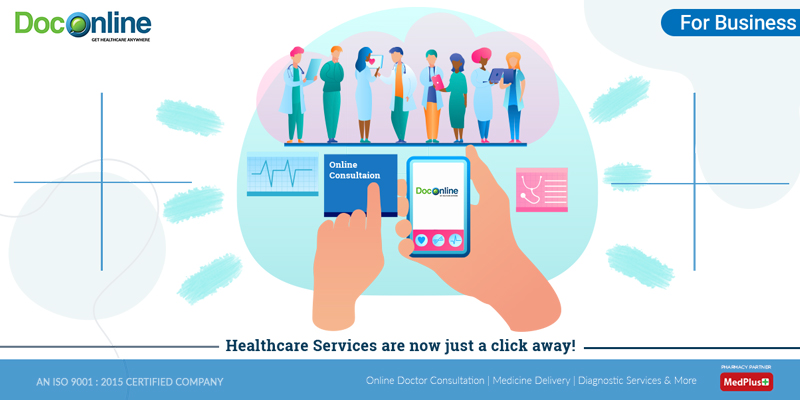A Comprehensive Guide to Subscription Based Healthcare: What You Need to Know
A Comprehensive Guide to Subscription Based Healthcare: What You Need to Know
Blog Article
The Rise of Subscription-Based Healthcare and Its Influence On Patient Care
As health care evolves, the subscription-based version is getting grip, assuring to reinvent client treatment by using predictability and ease of access. The possibility for these versions to reshape healthcare distribution elevates pushing concerns concerning their long-lasting sustainability and inclusivity. Are these subscription services the future of medical care, or do they run the risk of leaving vulnerable populaces behind?
Comprehending Subscription Medical Care Designs
Understanding the principle of subscription healthcare versions involves taking a look at a transformative technique to medical services that stresses affordability and access. These models, usually referred to as straight medical care (DPC) or attendant medicine, have become innovative choices to typical fee-for-service medical care systems. Subscription medical care allows patients to pay a fixed monthly or yearly charge for a defined set of medical solutions, which might include limitless workplace gos to, regular exams, and basic lab tests, without the requirement for typical insurance coverage invoicing.
The framework of membership health care models is designed to improve individual treatment by removing third-party payers and intricate billing codes, thus minimizing management problems. Medical care companies can focus a lot more on person treatment, cultivating more powerful patient-provider connections. This model also promotes preventative care by encouraging regular visits, as the monetary obstacle of per-visit charges is removed.
The membership model commonly encourages doctor to take care of smaller sized person panels, permitting more personalized care. It lines up financial motivations with person health and wellness results, as suppliers are inspired to maintain patient satisfaction and health. On the whole, comprehending registration health care models requires identifying their prospective to improve how treatment is provided and accessed.
Advantages for Individuals and Providers

For providers, subscription-based designs offer the possibility to strengthen patient-provider connections. With a stable revenue stream, health care experts can devote more time to each person, leading to an extra customized and comprehensive treatment experience. This model likewise minimizes dependence on high person volumes, reducing fatigue and enhancing task satisfaction. In addition, the focus on preventive care within registration plans can cause much better person end results and minimized long-lasting medical care costs. By focusing on continuous treatment, service providers can attend to issues before they intensify, ultimately profiting the health care system in its entirety by lowering the problem on emergency situation and acute treatment services.
Concerns and difficulties
While subscription-based healthcare models present many advantages, see this website they also come with a set of obstacles and issues that have to be dealt with. Initially, access stays a considerable issue, as these versions often target individuals that can afford month-to-month fees, potentially omitting low-income populaces. This elevates moral inquiries about equitable access to health care solutions. Furthermore, the different nature of membership strategies can bring about complication among individuals concerning insurance coverage specifics, potentially resulting in unmet expectations or inadequate treatment.
Financial sustainability of subscription-based models is one more issue. Providers must stabilize the set income from memberships with the variable expenses of healthcare solutions, which might change because of unexpected medical needs. This can develop pressure to limit solutions or boost fees, possibly affecting patient fulfillment and care top quality.
Moreover, regulative oversight of subscription-based medical care versions is still progressing. The absence of standard frameworks can bring about inconsistent solution top quality and responsibility, complicating initiatives to guarantee person security. The assimilation of technology-- usually a cornerstone of these models-- raises inquiries about data personal privacy and protection, as sensitive person information might be at risk to violations. Addressing these difficulties is critical for the successful and fair execution of subscription-based healthcare.
Effect on Patient-Doctor Relationships
One considerable effect of subscription-based medical care models on patient-doctor relationships is the potential for boosted continuity and personalized treatment. By taking on a registration version, medical professionals can take care of a smaller individual panel, permitting for even more dedicated time with each person. This boosted accessibility fosters a deeper understanding of a person's clinical background, way of living, and choices, allowing extra tailored therapy strategies and treatments.

Nevertheless, it is essential to recognize that while subscription-based versions may benefit those who can afford them, they can inadvertently expand health care disparities. People that are not able to participate in these designs might experience lower accessibility to personalized care, possibly influencing their connections with healthcare companies. Thus, while the registration model supplies encouraging advantages for patient-doctor partnerships, it also postures challenges that require to be dealt with to make sure equitable health care accessibility.
Future of Health Care Access

The function of technology can not be neglected in this change. Telemedicine platforms and electronic health records help with seamless interaction between patients and healthcare service providers, damaging down geographical and logistical barriers. Additionally, improvements in man-made knowledge and data analytics can even more customize healthcare by anticipating client requirements and maximizing treatment plans.
Nonetheless, the future of medical care accessibility likewise provides challenges, such as ensuring equity throughout different socio-economic teams. Policymakers and medical care suppliers need to work together to bridge the electronic divide, making certain that subscription-based designs remain comprehensive and inexpensive. As these systems grow, they hold the promise of making medical care much more easily accessible, effective, and patient-centric.
Verdict
Subscription-based medical care designs are improving individual treatment by providing a steady expense structure and improving availability. The surge of subscription-based medical care urges aggressive person interaction, which has the possible to enhance client results and complete satisfaction, indicating a transformative change in healthcare delivery.
As healthcare advances, the subscription-based model is acquiring traction, assuring to change individual treatment by supplying predictability and availability.Subscription-based medical care models provide distinctive helpful resources advantages for both suppliers and clients, improving the general healthcare experience.As medical care systems advance, the future of medical care accessibility often hinges on the combination of cutting-edge models and modern technologies.Subscription-based medical care models are improving individual care by supplying a steady expense structure and improving ease of access. The rise of subscription-based medical care urges proactive person involvement, which has the prospective to boost client results and fulfillment, signaling a transformative shift in medical care shipment.
Report this page